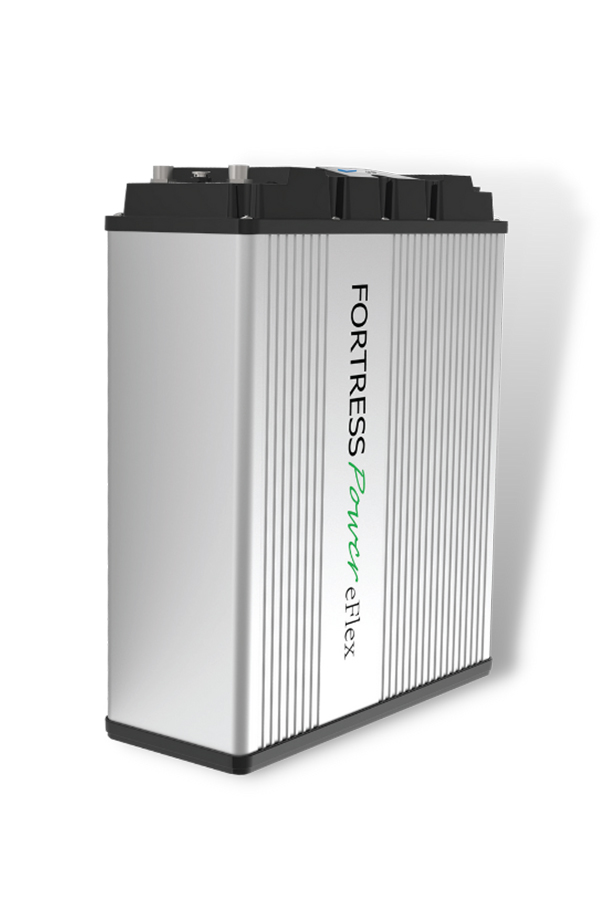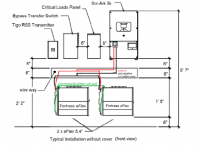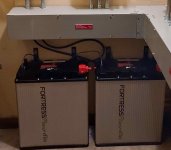Do Article 480 and 706 ever both apply to an installation where the batteries are listed as an (Energy Storage System)?
Say for example UL9540 but it could be any ESS standard.
Code rules on the 'wiring method' for connecting between an ESS and a disconnect or inverter seem non existent, unless 480.12 applies.
Take for example these 48V batteries:

 www.fortresspower.com
www.fortresspower.com
They are designed to have something like 2/0 battery cable ran to them.
The instructions, say a cabinet is optional and depict a battery cable just exiting a wireway this diagram is straight out of the instructions:

In this installation its a fine stand cable that is listed as 600V MTW, exiting the wireway thru a cord grip:
The positive and Negative exit thru separate K/O's:

If 480.12 does not apply is seems like they would have to be in a cabinet.
But the instructions say not required.
Nothing in 706 says 'I modify the code and you can now ignore Article 480' that I can find.
The way I read 90.3 Article 480 applies to all batteries including an energy storage system (ESS).
And when its a listed ESS 706 also applies along with 480 and if there is a conflict with 480, 706 prevails.
What do you all think?
Thanks in advance.
Say for example UL9540 but it could be any ESS standard.
Code rules on the 'wiring method' for connecting between an ESS and a disconnect or inverter seem non existent, unless 480.12 applies.
Take for example these 48V batteries:

eFlex 5.4kWh LFP Battery
Learn how the Fortress Power eFlex 5.4kWh LFP Battery transforms energy storage with smart technology, high efficiency, and rugged design.
 www.fortresspower.com
www.fortresspower.com
They are designed to have something like 2/0 battery cable ran to them.
The instructions, say a cabinet is optional and depict a battery cable just exiting a wireway this diagram is straight out of the instructions:

In this installation its a fine stand cable that is listed as 600V MTW, exiting the wireway thru a cord grip:
The positive and Negative exit thru separate K/O's:

If 480.12 does not apply is seems like they would have to be in a cabinet.
But the instructions say not required.
Nothing in 706 says 'I modify the code and you can now ignore Article 480' that I can find.
The way I read 90.3 Article 480 applies to all batteries including an energy storage system (ESS).
And when its a listed ESS 706 also applies along with 480 and if there is a conflict with 480, 706 prevails.
What do you all think?
Thanks in advance.

